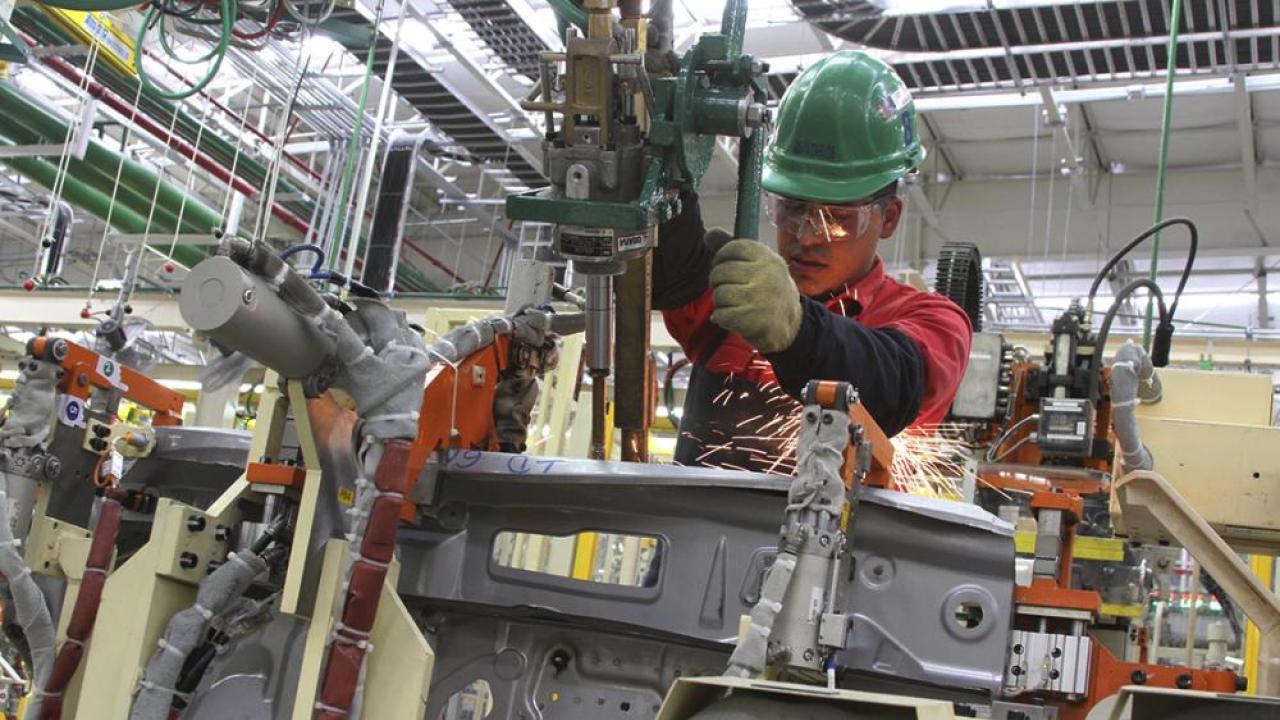
Our country benefited from strong demand in the US and trade tensions between the US and China.
Mexico has recorded higher growth in manufacturing output over the past three years compared to the United States and Canada, according to data from the United Nations Industrial Development Organization (UNIDO).
This production was severely affected in 2020 by the Covid-19 pandemic in all three countries, with year-on-year declines of 9.3% in Mexico, 6.3% in the United States and 9.6% in Canada.
But in the following three years, Mexico achieved greater dynamism in each of the years and a better average result compared to its two regional partners.
Mexican manufacturing output rose 9.4% in 2021, then 6.4% in 2022 and finally 1.0% in 2023.
In the same chronological order, the rates for the United States were 5.1, 2.9 and -0.6%, and those for Canada were 5.8, 3.7 and 0.7 percent.
During 2021 and 2022, Mexico benefited greatly from the substantial economic stimulus applied by Washington to prevent a drop in consumption due to Covid-19, which supported the demand for manufactured goods in Mexico.
In 2021, Mexico's manufacturing exports—more than 80% of which go to the United States—grew 16.7% in value, and in 2022 they rose another 16.6 percent.
Given these developments, it is worth noting in the US election climate that Republican candidate Donald Trump has proposed applying a 200% tariff on imports of John Deere tractors to the United States if the company moves production to Mexico.
Trump also threatened to impose a 100% tax on imports of cars originating in Mexico.
"We will put a 100% tariff on every car that comes through the Mexican border. The only way they can get out of the tariff is if they want to build a plant here in the United States, with their people operating that plant," the candidate said.
Mexican manufacturing production grew more than China's in 2022, as the indicator increased by 2.7% in this Asian country.
But in 2020 (+0.8%), 2021 (+12.4%) and 2023 (+4.7%), China's manufacturing output was higher.
Globally, manufacturing output growth is expected to slow to 1.2% in 2023 from 2.9% in 2022.
Industrializing economies experienced higher output growth than industrialized economies.
India and China had the highest manufacturing output growth rates among major U.S. trading partners, at 5.1% and 4.7%, respectively, in 2023.
UK manufacturing grew at a pace similar to the global average of 1.2%, and Mexico experienced a growth rate of 1.0%. Manufacturing output declined in 2023 compared to 2022 in the United States, Canada, Japan, and the European Union.
According to the U.S. International Trade Commission (USITC), global output increases in 2023 were largely driven by higher-tech industries, including motor vehicles, other transportation equipment, and electrical equipment.
In contrast, many sectors experienced declines in production, including furniture, leather products and apparel.
Overall, growth in global manufacturing output in 2023 did not translate into growth in global merchandise trade.
According to the World Trade Organization (WTO), the shift in global merchandise trade towards negative growth in 2023 can be attributed to difficult macroeconomic conditions driven mainly by inflationary pressures.
NEW TENSIONS
During 2023, major trade developments between the United States and China included an extension of four-year statutory reviews of Section 301 investigations, the reinstatement of certain U.S. tariff exclusions from Section 301 tariffs on imports from China and the implementation of the Uyghur Forced Labor Prevention Act, as well as enhanced export controls related to semiconductor manufacturing and advanced computing.
Motor vehicles led growth among manufacturing industries, with output increasing 10.5% in 2023.
Other sectors that experienced large increases were other transportation equipment, electrical equipment, machinery and equipment repair and installation, base metals, and coke and refined petroleum products.









